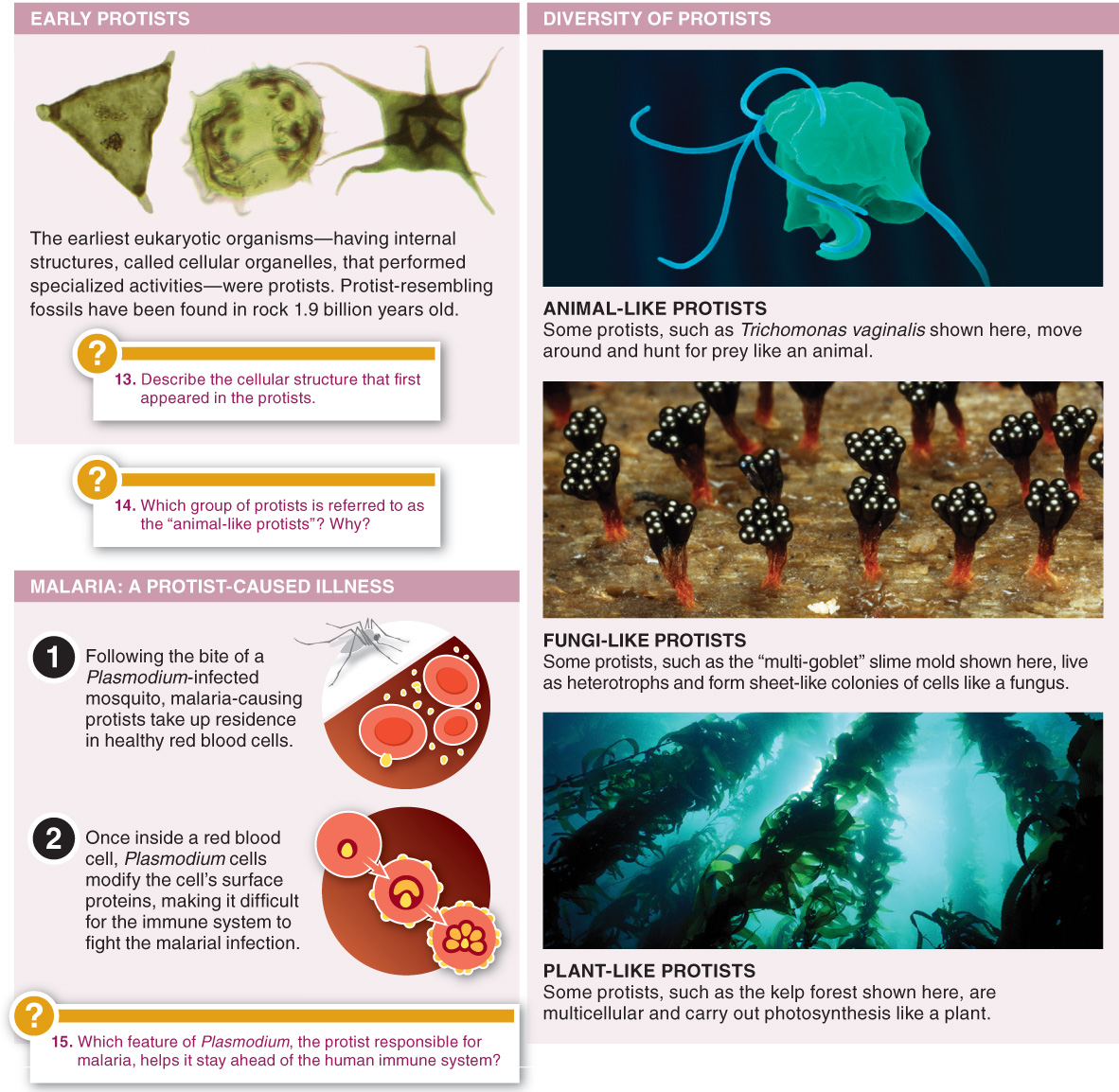13.13–13.15
13.13–Most protists are single-celled eukaryotes.
The nucleus is an evolutionary innovation that appeared for the first time in protists.

Q
Unlike other microbes, archaea are able to thrive:
- a) in very extreme environments (with respect to temperature, salinity, pressure, etc.).
- b) only at the typical body temperature of their mammalian hosts.
- c) inside eukaryotic cell organelles.
- d) in lakes and rivers (i.e., in fresh water).
- e) in well-
aerated soils.

Most archaeal species:
- a) have yet to be discovered.
- b) are pathogenic.
- c) are bacteriophages.
- d) are animal parasites.
- e) are beneficial to humans.

All protists are alike in that all are:
- a) photosynthetic.
- b) eukaryotic.
- c) parasitic.
- d) colonial.
- e) multicellular.

Which of the following statements about protists is correct?
- a) Protists were the first group of organisms to have a nucleus.
- b) Protists were the first group of bacteria.
- c) Protists are the only group of photosynthetic archaea.
- d) Protists are unique among the eukaryote kingdoms in that they are sessile.
- e) All protists use cilia for feeding.

Which of the following statements about Plasmodium is correct?
- a) It causes sickle-
cell anemia. - b) Because it changes its surface proteins frequently, it is largely invisible to the human immune system.
- c) It is transmitted by Paramecium.
- d) It confers resistance to malaria.
- e) It is most common in North America.

569